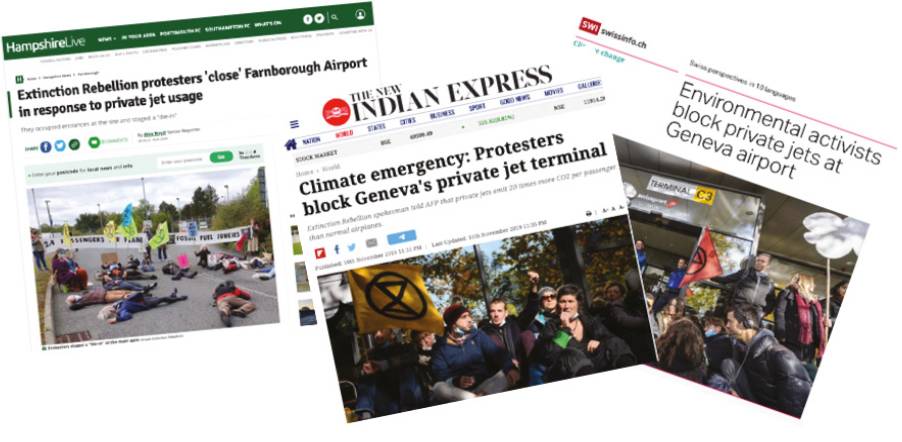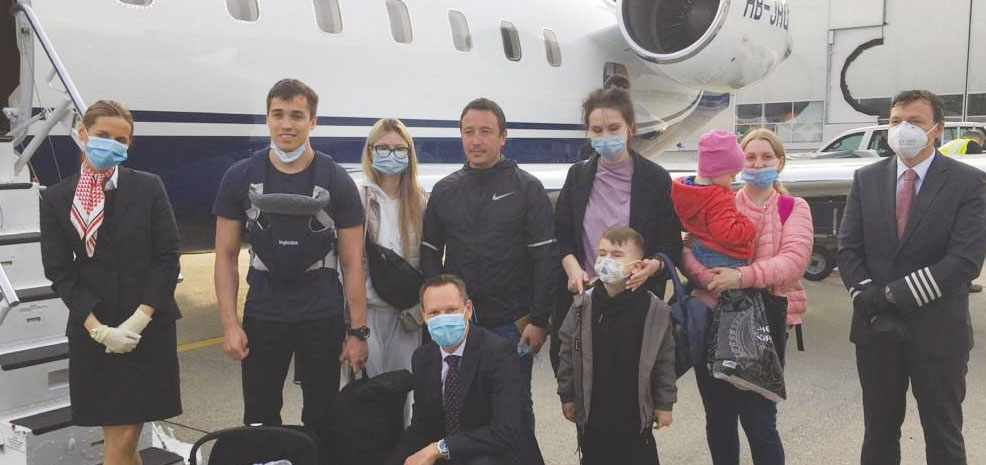Ben Griffiths, Head of Communication, 2Excel Aviation, explained how the best way to get stories published was to build relationships with journalists. He gave an example of how Airbus had taken him to see a manufacturing facility and to meet people who worked in it so that he understood what they were about.
 Bad news: Business aviation has its share of negative stories.
Bad news: Business aviation has its share of negative stories.
Green power
Developing the themes of the environment and future technology, the second part of the conference, turned its attention to sustainability and the development of electric-powered aircraft.
“We need to keep on doing the job we’re doing,” said Athar Husain Khan, Secretary-General of the European Business Aviation Association (EBAA). “We are trying to encourage sustainability and the use of sustainable aviation fuels (SAFs). The EBAA is part of the EU Renewable Fuels for Europe (REFUEL) initiative which sets out a roadmap for the introduction of biofuels into the EU transport system by 2030. Why is this so important? We have a duty to the younger generation. We need to have answers. There are lots of regulatory and other pressures to reduce carbon emissions, The European Green Deal (which aims to make the EU carbon-neutral by 2050) has received a lot of media attention but needs input from industry.”
Charles Etter, who is in charge of Environmental Strategy and Regulatory Affairs at Gulfstream Aerospace, explained how, in 2009, business aviation manufacturers, service providers and operators jointly announced the Business Aviation Commitment on Climate Change. The aim of this initiative is to improve fuel efficiency by 2% per year between 2010 and 2020, achieve carbon-neutral growth from 2020 and to halve CO2 2 emissions by 2050, relative to 2005. Etter said that, since 2015, Gulfstream has a contract to supply SAFs with World Fuel Services, a contract that was renewed in September this year.
 Good news: In May Swiss private aircraft operator Albinati Aeronautics came to the rescue of ten Russian children with retinal cancer who were unable to use commercial air transport to get to a hospital in Lausanne for treatment. Albinati flew two round trips carrying five children and their mothers using a Bombardier Challenger 604 paid for by Olympic ski champion Jean-Claude
Killy. Albinati Aeronautics
Good news: In May Swiss private aircraft operator Albinati Aeronautics came to the rescue of ten Russian children with retinal cancer who were unable to use commercial air transport to get to a hospital in Lausanne for treatment. Albinati flew two round trips carrying five children and their mothers using a Bombardier Challenger 604 paid for by Olympic ski champion Jean-Claude
Killy. Albinati Aeronautics
Diverse skills workforce
However, to achieve all these technological and environmental goals, business aviation companies are going to need people with the right skills to tackle the challenges ahead. This can only be achieved by reaching out to all the available candidates, regardless of race or gender – and to make working in business aviation an attractive career. The third part of the conference addressed the question of how to attract and retain a diverse skills force without compromising quality.
“When the aerospace market comes back after Covid-19, we will need a diverse workforce,” declared Karin Muller, International Director of Women in Corporate Aviation. She described the challenge of encouraging more women into aerospace as a recipe: “To create a more diverse workforce, we need more but we need a willingness to change, ” she explained. We need to find a common platform – there are lots of opportunities to collaborate. Women already in the industry have to be role models who will attract a diverse workforce, through mentoring, promoting careers and scholarships.”
Dave Edwards FRAeS, CEO of The Air Charter Association said that there was also a problem because people were leaving the aerospace industry. “How do we get them back?” he asked. “How do we attract young people? There’s other exciting things happening out there for careers. People might not want to join business aviation – we’ve got a challenging image. How do we get the message out that there are great careers at the moment in business aviation?”
Chris Cox, EMEA HR Specialist at Gulfstream explained how the company now had women working on the shop floor. However, he added that just getting men and women from all ethnic backgrounds with the right skills to do a job was not the only challenge – they had to feel welcome and be able to work without experiencing negativity.
Joel Davis, Director of Human Resources EMEA at Collins Aerospace, described how the Black Lives Matter debate has raised awareness of race as an issue. “We need to ask ourselves uncomfortable questions,” he said. “Are we where we want to be? No. Are we as representative as we want to be? No. It is difficult to retain talent at present – we need to be more inclusive. However, if we want to bring more ethnic people into our industry, organisations need to incorporate diversity into the fabric of the way it operates. Despite the setback of Covid-19, the aerospace industry will recover eventually. We are creating the future of how people will move around the world. Aerospace is still a really interesting industry to be in.”
 Gulfstream Aerospace
Gulfstream Aerospace
